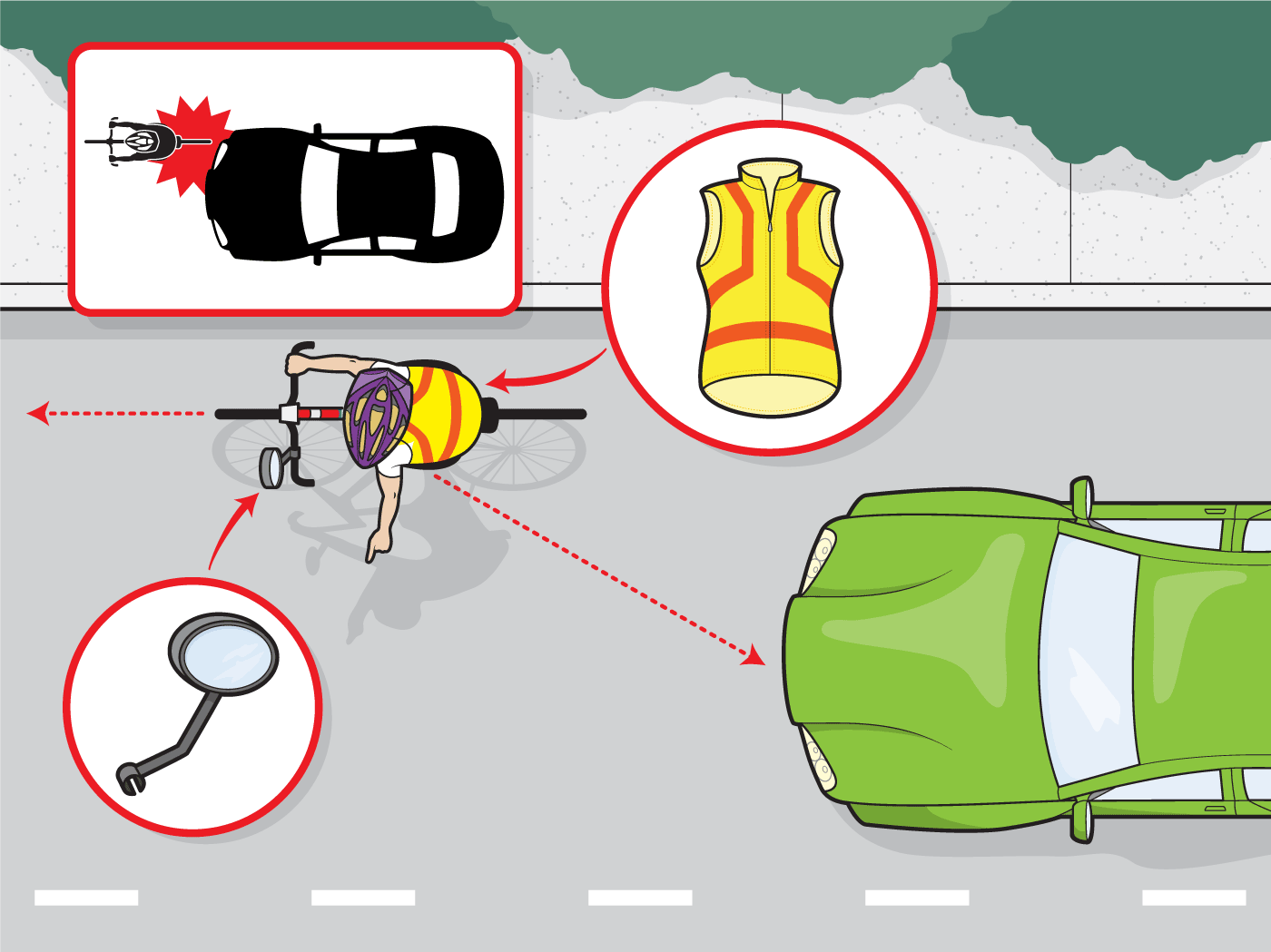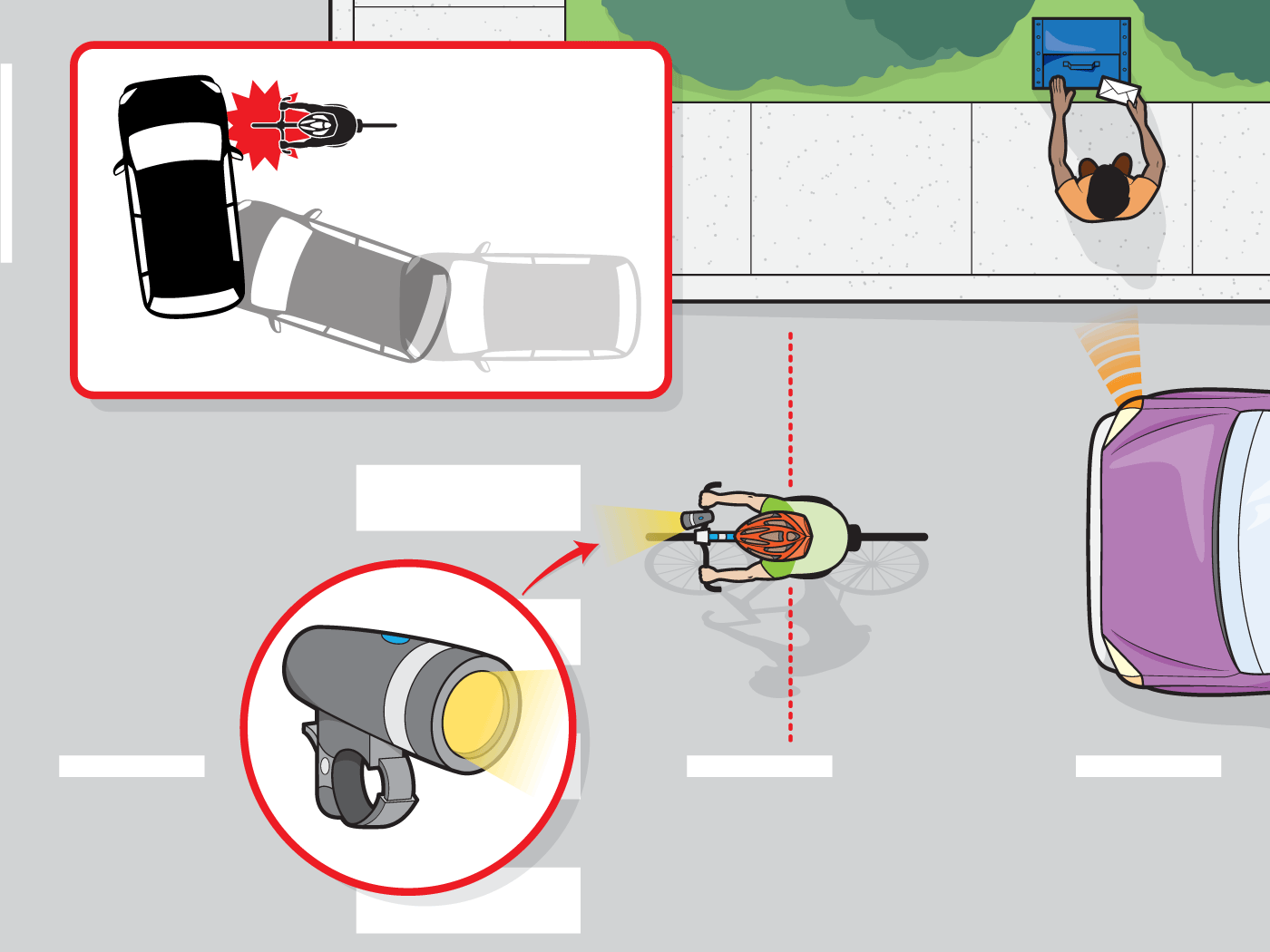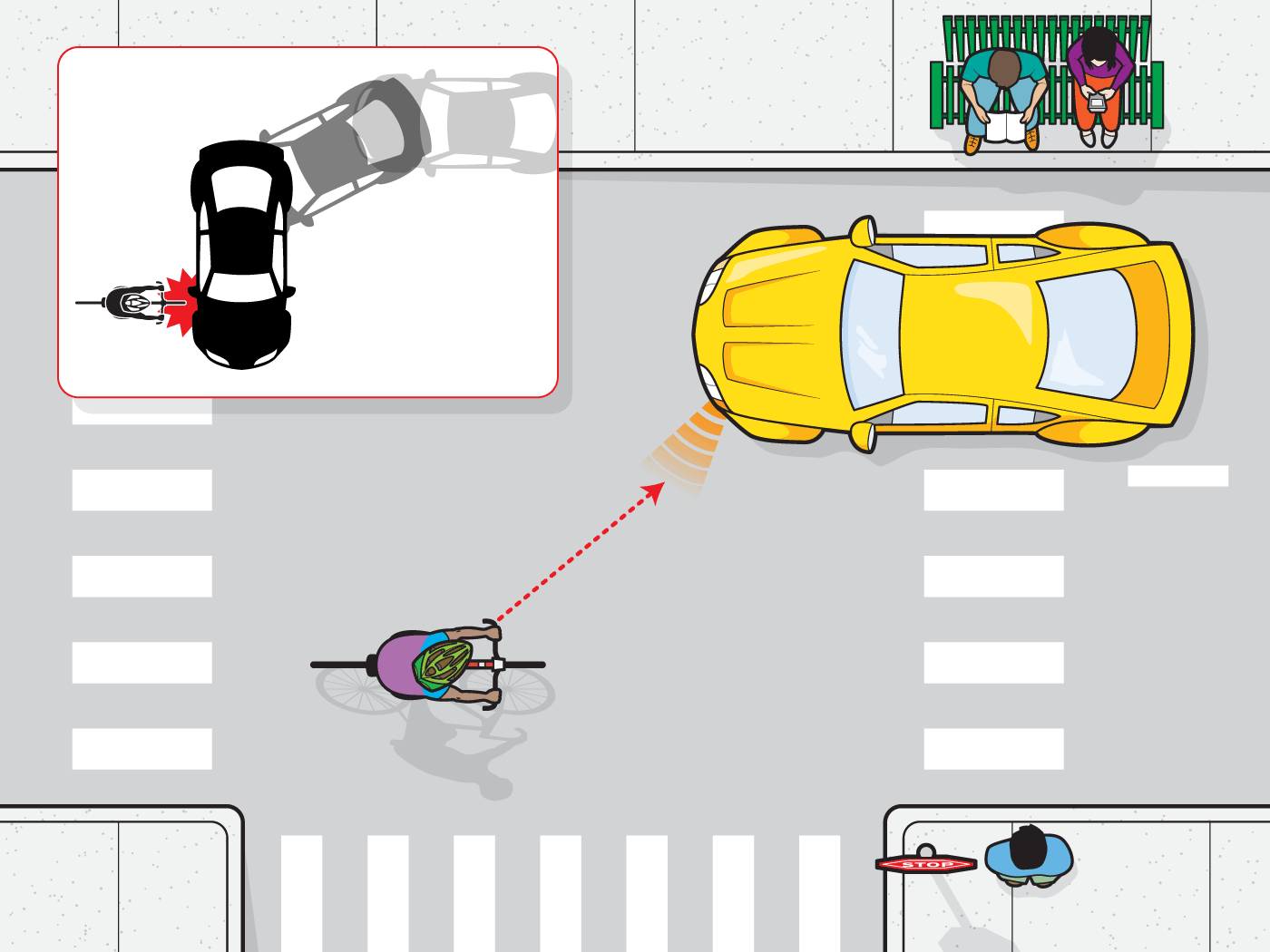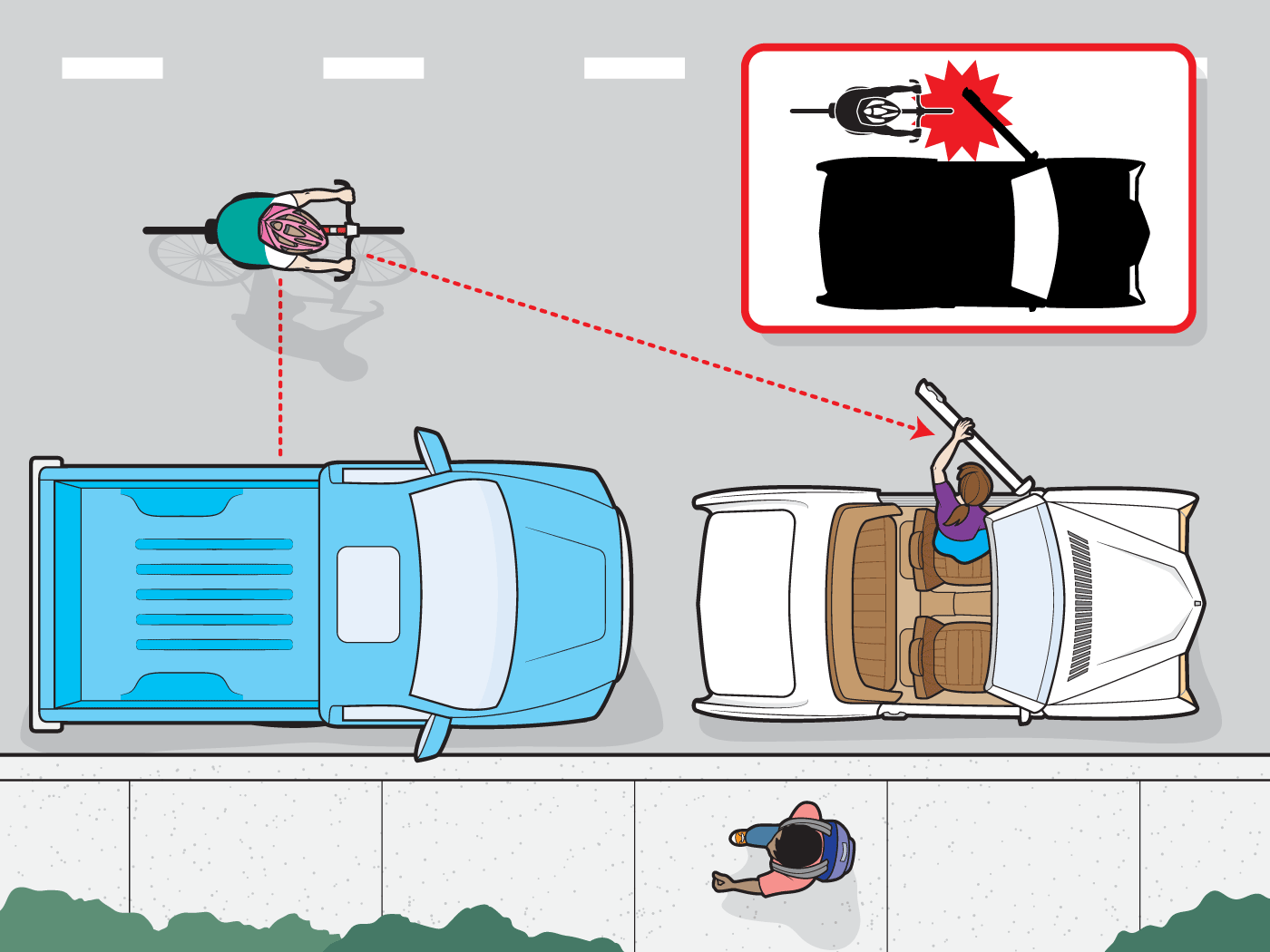This is a guest blog post written by AAA of Nebraska. You can learn more about AAA of Nebraska here and here.
**
Bicycling is fun for people of all ages, whether you ride solo or in a group. And you can’t beat the potential health benefits—increased muscle strength, decreased stress, improved joint mobility, better coordination and so much more. And even more folks are pedaling to work, according to the National Highway Traffic Safety Administration.
Whether riding for fun, fitness or just to commute, there’s always the risk of a crash. There are approximately 800 bicyclist deaths and 48,000 bicyclists injured in roadway crashes annually, according to the U.S. Department of Transportation.
So how do you protect yourself? Lower your risk of run-ins with cars by following these tips.
Rear-Ended

What is it? When a driver strikes a cyclist from behind.
How to avoid it: Making yourself as visible as possible can help. Wear a reflective vest and use reflectors and lights on your bicycle for day and night, stick out your left arm and point left when moving to the left, and stay straight while checking for traffic over your shoulder. Drivers will notice you more if you don’t ride too close to the curb. If there’s no bicycle lane, choose wide streets that allow room for a car and a bicycle to ride side by side. Consider adding a mirror to your bicycle to provide more rear-end visibility when riding.
Right Hook

What is it? The motorist makes a right turn across the bicyclist’s lane of travel.
How to avoid it: Be as visible as possible. Use a headlight designed specifically for daytime use. These are very bright and have special flashing systems to maximize visibility.
Also, ride as close to the left of the lane as possible to avoid being in a driver’s blind spot. It’s OK to take the entire lane—it’s allowed in all 50 states. Taking the lane will cause the driver to have to pass you more deliberately. If you notice a car turning into your path, slow down and stop.
Left Cross

What is it? A motorist misjudges an incoming cyclist’s speed or fails to see a cyclist traveling in the opposite lane and makes a left turn into the cyclist’s path.
How to avoid it: Don’t ride on sidewalks, which are for pedestrians. Scan several seconds ahead for potential dangers such as vehicles concealed by traffic, bushes and non-moving cars. Motorists are still responsible for yielding the right of way to bicycles, which should ride with the traffic.
Doored

What is it? A driver or passenger opens a car door into a cyclist’s path.
How to avoid it: Always look several feet ahead, stay at least 3 feet away from parked or moving cars, and take the lane if necessary so you’re not too close to the curb
AAA Bicycle Service is not available in all states. Bicycle transportation service is counted toward your allotted roadside assistance service calls per member, per membership year. AAA will transport you and your bike to any point of safety within the limits of your coverage.
